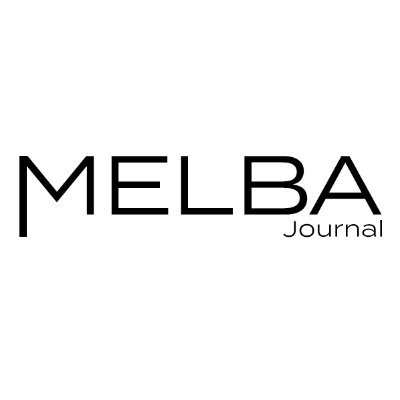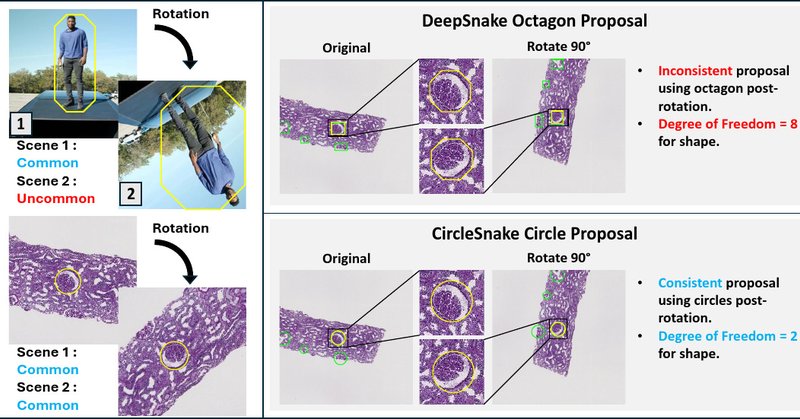
Machine Learning for Biomedical Imaging
@MELBAJournal
Followers
3K
Following
275
Media
10
Statuses
381
Open-access, independent, minimum fee journal. Co-founded by @arbtal,@ja_schnabel,@mertrory,@wmwells3,@MarcNiethammer,@adriandalca
Joined January 2020
We have a new low-frequency email list. Please consider signing up if you want to hear about our important announcements. https://t.co/wxmTJZfixE
1
2
16
🎯 Authors introduce an instance segmentation framework for ball-shaped medical objects and achieve robust, rotation-invariant segmentation, outperforming benchmarks on glomeruli and nucleus detection. 🔎 Free to read:
melba-journal.org
J Xiong, E H Nguyen, Y Liu, R Deng, R N Tyree, H Correa, G Hiremath, Y Wang, H Yang, A B Fogo, Y Huo
0
0
0
🚨 New publication alert: 📢 “Circle Representation for Medical Instance Object Segmentation.” 🖊️ J Xiong, E H Nguyen, Y Liu, R Deng, R N Tyree, H Correa, G Hiremath, Y Wang, H Yang, A B Fogo, Y Huo. ⬇️
1
0
2
🎯 Authors propose a DL method for voxel-wise estimation of tissue composition parameters from chemical shift-encoded MRI, enabling accurate, anatomy-independent estimation with up to 2800× speed-up compared to traditional fitting methods. 🔎 Free to read:
melba-journal.org
T J Bray, G V Minore, A Bainbridge, L Dwyer-Hemmings, S A Taylor, M A Hall-Craggs, H Zhang
0
1
1
🚨 New publication alert: 📢 “RAIDER: Rapid, anatomy-independent, deep learning-based PDFF and R2* estimation using magnitude-only signals, dual neural networks and training data distribution design.” 🖊️ T JP Bray, G V Minore, ..., @profstuartaylor, M A Hall-Craggs, H Zhang. ⬇️
1
2
4
🎯 Authors propose a hybrid 3D CNN with cross-attention for glaucoma classification from OCT scans, designed to capture asymmetries across hemiretinas and integrate optic nerve head and macula features. 🔎 Free to read:
melba-journal.org
R Kenia, A Li, R Srivastava, K A Thakoor
0
0
2
🚨 New publication alert: 📢 “AI-CNet3D: An Anatomically-Informed Cross-Attention Network with Multi-Task Consistency Fine-tuning for 3D Glaucoma Classification.” 🖊️ R Kenia, A Li, R Srivastava, @KaveriThakoor. ⬇️
1
1
3
🎯 Authors propose a domain-adaptive framework for brain vessel segmentation that uses image-to-image translation and disentanglement to handle varied imaging modalities without domain-specific design. 🔎 Free to read:
melba-journal.org
F Galati, D Falcetta, R Cortese, F Prados, N Burgos, M A Zuluaga
0
0
2
🚨 New publication alert: 📢 “Multi-Domain Brain Vessel Segmentation Through Feature Disentanglement.” 🖊️ F Galati, D Falcetta, @RosaCortese5, F Prados, @NinonBurgos, @marazul. ⬇️
1
2
4
🎯 Authors examine sex bias in DL models for ECG classification and find that performance varies across conditions and model types. Even with balanced training data, disparities persist, emphasizing the need for fairness in clinical AI. 🔎 Free to read:
melba-journal.org
M Galanty, B van der Ster, A P Vlaar, C I Sánchez
0
0
1
🚨 New publication alert: 📢 “Investigating sex bias in ECG classification for Atrial Fibrillation, Sinus Rhythm and Myocardial Infarction.” 🖊️ @GalantyMaria, B van der Ster, A P Vlaar, C I Sánchez. ⬇️
1
1
2
Heartfelt thank you to @ja_schnabel for her contributions as Founding Executive Editor of MELBA! Julia played a central role in kickstarting the journal and shaping its mission and vision. We look forward to working with Julia in her new role as an advisor to the journal.
0
1
7
🎯 Authors propose a distance map–based cell segmentation method that supports partially annotated objects, addressing limitations of full supervision. It enables effective transfer learning while maintaining segmentation quality. 🔎 Free to read:
0
0
1
🚨 New publication alert: 📢 “Sketchpose: Learning to Segment Cells with Partial Annotations.” 🖊️ @cazorla31, N Munier, R Morin, P Weiss. ⬇️
1
0
1
🎯 Authors propose a lightweight debiasing method that fine-tunes model parameters based on their contributions to bias and prediction. With minimal data and training, it improves fairness and generalization without compromising accuracy. 🔎 Free to read:
0
0
0
🚨 New publication alert: 📢 “SWiFT: Soft-Mask Weight Fine-tuning for Bias Mitigation.” 🖊️ J Yan, F Chen, Y Xue, Y Du, K Vilouras, @STsaftaris, @steve_mcdonagh. ⬇️
1
1
3
🎯 Authors propose Neural CRF (NCRF), an end-to-end model for prostate MRI segmentation using learnable deep feature-based potentials. NCRF improves consistency and outperforms traditional CRFs in zonal segmentation accuracy. 🔎 Free to read:
melba-journal.org
A L Y Hung, K Zhao, K Pang, H Zheng, X Du, Q Miao, D Terzopoulos, K Sung
0
0
0
🚨 New publication alert: 📢 “A Neural Conditional Random Field Model Using Deep Features and Learnable Functions for End-to-End MRI Prostate Zonal Segmentation.” 🖊️ A L Y Hung, K Zhao, K Pang, H Zheng, X Du, Q Miao, D Terzopoulos, K Sung. ⬇️
1
1
3
🎯 Authors investigate transfer learning to improve the robustness of deformable image registration under unforeseen domain shifts, by pretraining on synthetic data and fine-tuning on target domains. 🔎 Free to read:
melba-journal.org
I D Kolenbrander, M Maspero, J P Pluim
0
0
0
🚨 New publication alert: 📢 “Robust deformable image registration using synthetic data and transfer learning.” 🖊️ I D Kolenbrander, M Maspero, J PW Pluim. ⬇️
1
1
2
🎯 Authors propose a synthetic data framework for stroke lesion segmentation, extending SynthSeg with lesion-specific augmentations, and achieve strong out-of-domain generalization. 🔎 Free to read:
melba-journal.org
L Chalcroft, I Pappas, C J Price, J Ashburner
0
0
1








